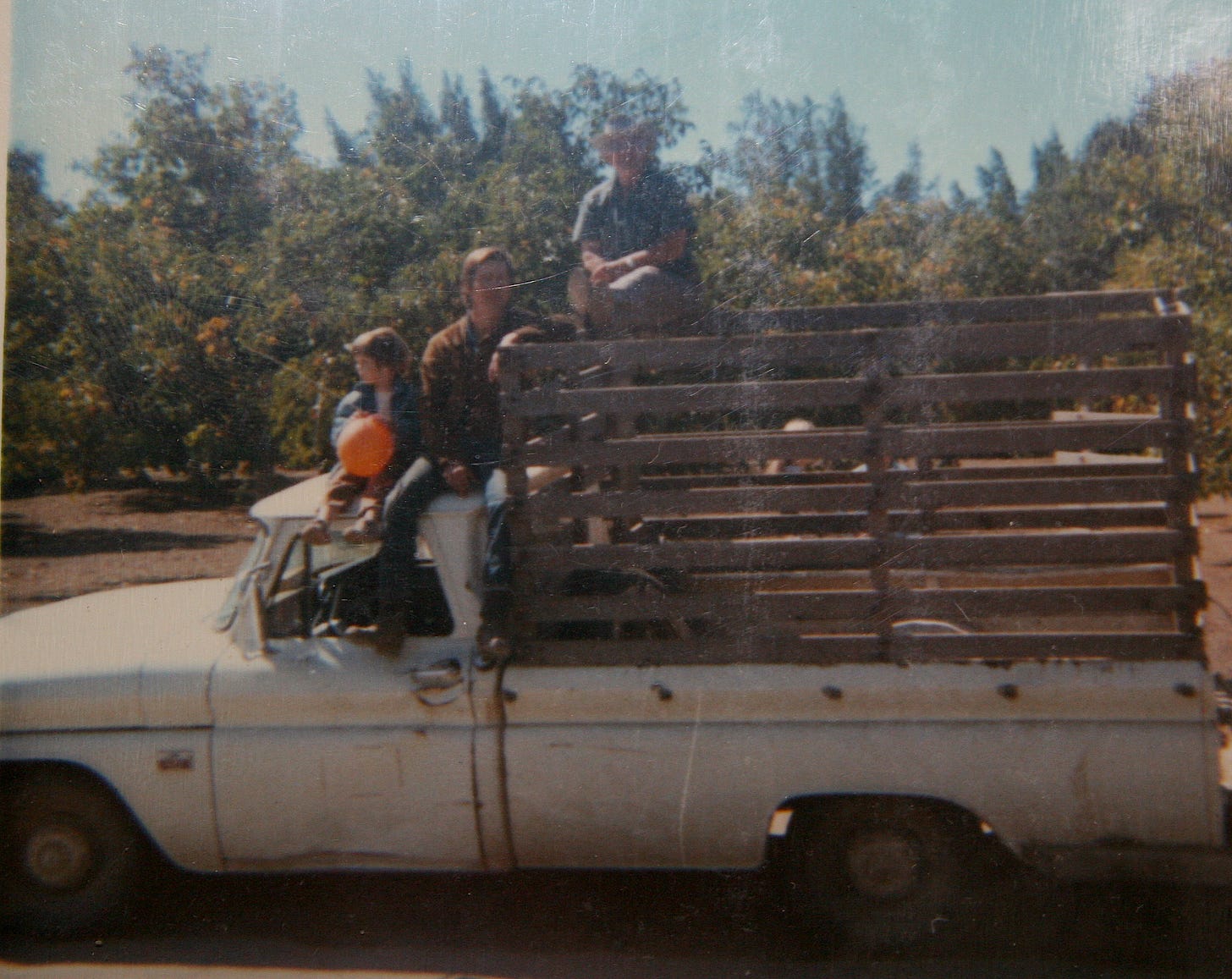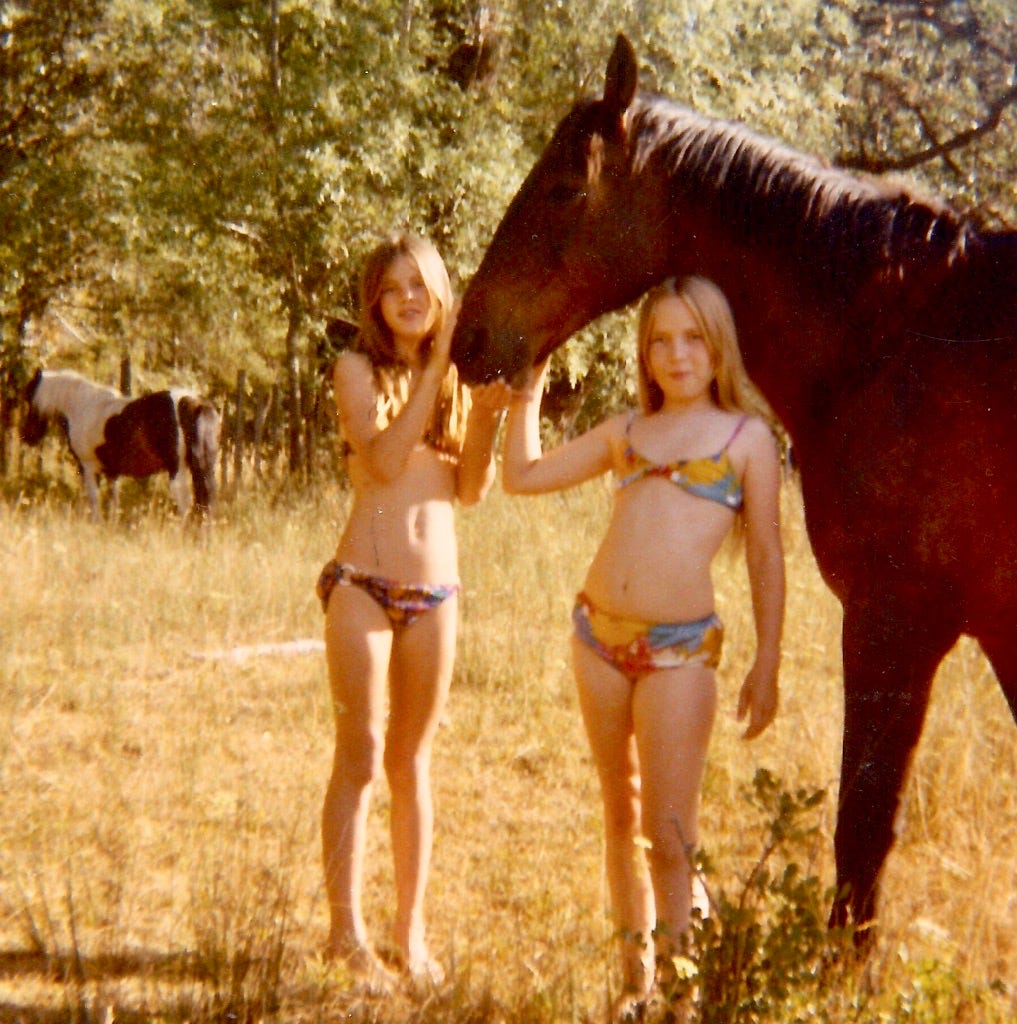Swimming holes in specific rivers and creeks as gathering places were frequently written about by the participants in this ethnography. These were coveted locations sometimes not far off the road. Other swimming holes were more remote.

Old timer Bill Wilson had a 4th of July tradition of putting the American flag on the cattle racks of his pick up (above), filling his truck with Comptche kids, and taking us to the Navarro River for the day. Our parents met us there with picnic food and we enjoyed an all-ages day of cool fun in the river.
The Pot Hole is the locals’ name for a deep natural pool in the Albion River that flows through Comptche, technically a creek at this stage. The pool is like a big black cauldron carved in stone through millennia by water falling from rocks above. A short hike up from the river is an old railroad trestle where we sunbathed. There’s no road leading to this coveted place, it’s reached by foot or on horseback.

Comptche is very hot and dry in the summer. Summer rain was a fluke before climate change, and the hot dry months increased fire danger critically. Comptche residents escape the heat by going to their favorite swimming holes in creeks, rivers, and ponds. To this day, it’s a tradition to pack lunch in coolers and float watermelon and six packs of soda and beer along the river’s edge to keep cool.
Big River Beach in Mendocino and a few man-made ponds and dams in the area also offered respite from the hot, dry weather. Going to the water has always been an important way of handling the scorching heat of Comptche summers.
When hippies went swimming, it was usually in birthday suits not swimming suits. They were living in nature and naked is natural way to swim. Those who opted for skinny-dipping were boldly, sometimes defiantly, exercising the hippie credo:
If it feels good, do it, just as long as it isn’t hurting anyone.
An old timer respondent shared a common sentiment about back-to-the-landers populating their summer respites in the creeks and ponds. He told me in an interview:
“They took over our swimming holes. We went to the Pot Hole and there was a bunch ‘a nudies down there. It was the first time I saw nudity.”
A newcomer wrote about an incident at his pond, situated well off the main road, but near a shared ranch driveway. The back-to-the-land family had visitors from the city on a hot afternoon in early June. They were cooling off, swimming nude in the roadside pond. Meanwhile, the afternoon school bus was bringing students home from Mendocino. An old-timer mom was driving her kids back to the ranch after picking them up at the end of their rural road, right past the pond full of splashing nude long-hairs. Shortly after, the father came barreling down the road in his pickup, trailed by a whirlwind of dust. The newcomer wrote about the encounter with his neighbor:
“He was furious that there’s naked hippies on his road. He runs over, and in my face says: “What the fuck?!” Calmly, all I could say was, ‘B—, we’re going to have to learn what each other likes and doesn’t like. Starting today.’ He’s now an ally and friend.
Swimming holes were gathering places where differences were plain to see, exacerbating the values-based division of the community. Unabashed hippie nudity in shared places for summer cooling were instances cited where old-timers felt truly offended by newcomers.
Next up - Gathering Places: The Grange
References use for this post:
Spicer, Lisa Gruwell 2012, c 2024. Finding Common Ground: When the Hippie Counterculture Immigrated to a Rural Redwood Community. Western Washington University.







